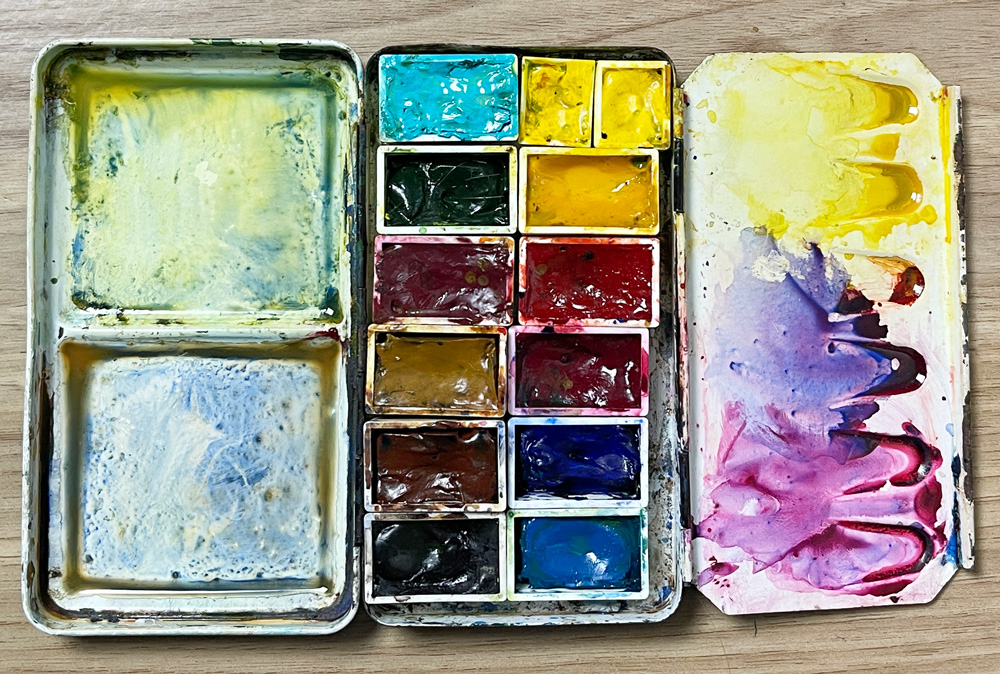At first glance, intermix suggests a blur: colors bleeding into a single hue, voices merging into a chorus. But harmony rarely comes from erasure. It emerges when differences remain legible and yet find a way to cohere-when edges meet without dissolving, when separate lines hold their shape and still form a chord.Intermix is not a melting pot or a collision; it is the craft of arrangement, the design of relations that lets unlike parts work in concert.
This idea threads through many domains. In materials science, alloys outperform pure metals because their varied lattices reinforce one another. In music,counterpoint relies on independent melodies aligning through shared timing and tonal logic. urban districts thrive where diverse uses intersect under fair infrastructure. Ecologists study the ”edge effect,” where overlapping habitats foster unexpected richness. Teams that pair expert judgment with machine patterning often solve problems neither could crack alone. Across these settings, the question is similar: what structures let difference be productive rather than prohibitive?
This article examines Intermix as a practical framework for bringing distinct elements into harmony. We will outline the conditions that make compatibility possible-interfaces, constraints, feedback, and governance-alongside methods to detect when balance tips into dominance or dilution. Rather than prescribing a single formula, we will map patterns that travel across fields and scales, from studios to cities, codebases to communities. The aim is simple: to understand how to keep parts distinct, connections intelligible, and the whole resilient.
Anatomy of intermix How Contrast Complementarity and Context Create Coherence
Coherence is engineered by three forces working in concert. Contrast draws focus and creates edges that separate signal from noise. Complementarity pairs unlike capabilities so each offsets the other’s blind spots. Context frames intention-audience,place,and moment-so choices read as necessary rather than arbitrary. When these forces braid together, difference becomes direction and variety resolves into a single, readable intent.
- Scale: size and spacing establish hierarchy without shouting.
- Color/Value: hue and luminance create legibility and emphasis.
- Texture/Type: pattern and typography balance energy with clarity.
- Function/Roles: distinct tasks cooperate through well-defined responsibilities.
- Timing/Cadence: pacing aligns attention with sequence and goal.
| Lever | Purpose | Swift Test |
|---|---|---|
| Contrast | Make differences legible | Can you tell A from B at a glance? |
| Complementarity | let strengths fill gaps | Do parts improve each other? |
| Context | Bind choices to situation | why this, here, now? |
Treat harmony as a network of relationships, not uniformity. use contrast to spark attention, complementarity to sustain utility, and context to justify placement and tone. Iterate in layers-surface cues, structural logic, situational fit-and watch how adjustments in one layer re-balance the rest. When alignment persists across layers, the whole reads as one.
- Swap Test: replace a part; if intent holds, cohesion is structural, not cosmetic.
- Ratio Rule (70/20/10): dominant, supporting, accent-keeps variety from fragmenting.
- Throughline: one sentence linking audience, need, and choice ensures decisions cohere.
- Edge Cases: low light,small screens,quiet mode-context stress-tests clarity.
- Transition Map: define how elements hand off; coherence lives in the seams.

Evidence Based Patterns to Blend Distinct Elements Gradient Bridges rhythm Anchors and Scale Harmonization
Data-guided blending starts by softening contrast where eyes stumble and stabilizing rhythm where attention wanders. Use gradient bridges that shift primarily in luminance before hue to reduce saccadic jumps, then place rhythm anchors-recurring shapes, color chips, or typographic markers-on a predictable grid to create wayfinding without shouting. apply scale harmonization with a modest modular ratio (1.125-1.2) that keeps headings, media, and controls interrelated. Teams report faster time-to-first-click, smoother scroll velocity, and higher perceived cohesion when these three moves work in concert.
- Luminance-first gradients: adjust lightness in 8-12 L* steps; add hue shifts only after motion feels calm.
- Anchor cadence: repeat a distinct token (icon, rule, badge) every 600-900 px in long pages.
- Modular scale: bind text, media, and spacing to 1.125 or 1.2; let outliers snap to nearest tier.
- Whitespace rhythm: alternate compact and airy blocks to signal hierarchy without extra color.
- Motion tempering: keep micro-interactions at 200-300 ms; avoid desynchronizing multiple easings.
| Pattern | What to tune | Quick metric |
|---|---|---|
| Gradient bridge | ΔL* 8-12 per stop; 2-3 stops | Saccades ↓ |
| Rhythm anchors | 4/8 baseline grid; echo every 600-900 px | TTF-Click ↓ |
| Scale harmony | 1.125-1.2 modular tiers | Scan time ↓ |
| Mixed media | Stable anchor color; soft edges | Bounce rate ↓ |
Implement and verify: prototype with tokens for color, rhythm, and scale; A/B test anchor density and gradient stops; log click entropy, scroll depth, and dwell time. If transitions still feel abrupt, reduce hue span while keeping luminance slope consistent; if attention drifts, increase anchor contrast or tighten the grid; if elements compete, resnap sizes to the nearest scale step. The result is a quiet cohesion: gradients handle the handoff, anchors hold attention, and scale keeps every part in proportion.

Field Notes from Practice Materials Palettes and Cultural motifs That Harmonize Without Flattening Difference
On site walks and studio mockups keep confirming a simple premise: harmony happens at the joints. Pairing honest materials with legible motifs works when each retains its grain, scale, and story. We tune edges rather than erase them-aligning seams, calibrating reflectance, and letting small overlaps act as translators. The goal is not a blended mush but a braided adjacency where difference reads clearly while still co-composing a room, facade, or object.
- Scale discipline: keep motif repeat smaller than the dominant material module by 30-50% to prevent pattern takeover.
- Chroma bridges: share one mid-tone neutral between elements; let accent colors remain culturally specific.
- finish adjacency: matte next to gloss, open grain beside tight weave-contrast reveals character without conflict.
- Edge literacy: celebrate thresholds with trims,stitches,or kerfs that acknowledge the meeting,not conceal it.
- Story placement: locate narrative motifs at touch points-handles, hems, handrails-so interaction builds respect.
| Palette | primary Material | Companion Motif | Bridge |
|---|---|---|---|
| Tidebound | Saltwashed oak | Indigo shibori | Brushed steel trims |
| Kiln + Cloth | Terracotta tile | Berber rhombus | Sand-lime grout |
| Desert Confluence | Rammed earth | Geometric mashrabiya | shadow reveals |
| Urban Canopy | Blackened steel | Andean stripe | Olive wool felt |
In review, the most resilient compositions keep contextual integrity intact: textures remain tactile, pattern origins are cited in documentation, and making partners are credited. We resist flattening by designing with clear edges, proportionate voices, and reversible assemblies so elements can stand alone if needed. The result is not consensus,but a poised conversation-materials speaking in their own accents,meeting through light,touch,and shared cadence.

Actionable Guidelines Ratios Metrics and Iteration Cycles to Tune Balance and Prevent Muddle
Balance is engineered, not wished for. Start with explicit blend bands-set a primary-to-secondary ratio like 60:40 with a tolerance of ±10%-and treat anything outside that window as a hypothesis, not a default. Define a coherence score before you begin (e.g.,rubric across tone,structure,and intent),and commit to short iteration cycles that expose conflict early rather than after polish. maintain a consistency budget that caps novel elements per release, and pair every change with a named metric it intends to move. When the mix feels muddy, prune by subtraction first: remove the faintest signals, reduce layers, then reintroduce only what measurably lifts clarity.
- Ratio guardrails: Hold the blend at 60:40 ±10% to prevent dominance or dilution.
- Signal-to-noise target: Aim for ≥ 3:1; retire elements that never cross 2:1.
- Consistency budget: Max 20% variance per cycle across voice, format, or palette.
- cadence: Weekly micro-iterations; monthly synthesis to lock learnings.
- Decision gates: Ship if coherence ≥ 7/10 and drift index ≤ 0.15; otherwise prune.
- Debrief prompts: What clarified? What doubled? What can be deleted without harm?
| Metric | Captures | Target | Tool |
|---|---|---|---|
| Blend Ratio | Weight balance | 60:40 ±10% | Style weights |
| Coherence Score | Unity of intent | ≥ 7/10 | Rubric/votes |
| Drift Index | Unplanned shift | ≤ 0.15/sprint | diff checks |
| Engagement mix | Channel spread | 3+; none > 50% | analytics |
| Latency to Clarity | Time to “gets it” | < 24h | Surveys |
Run a compact loop-Plan → Blend → Measure → Prune-and freeze drift with a weekly balance check: confirm ratios, review the top three signals, and cut anything that performs below baseline twice in a row. Keep the experiment queue small (three bets max), label each with a single success metric, and set a stop rule before launch. Archive snapshots so you can revert to the last clear state in one click, and maintain a lightweight harmony dashboard that surfaces the ratio, coherence, and drift in real time. Over time, the mix becomes less about taste and more about a transparent choreography between evidence and intent.
To Wrap It Up
Intermix, is not a melting but a meeting. It is the seam where differences stay visible and still learn to move together-the braided river rather than a single channel, the counterpoint rather than a single note.What holds it is indeed not sameness but timing, spacing, and a willingness to let borders be edges that connect as much as they divide.
Seen this way, harmony is a practice of arrangement. Cities, interfaces, teams, materials-each finds coherence by giving contrasts room to operate, by setting shared tempos without flattening voice.The work lives in thresholds and transitions: the grout between tiles, the pauses between instruments, the protocols that let unlike parts touch without collapse.
As new elements enter the score, the composition adjusts. Intermix provides a frame for that ongoing calibration-a way to keep identities legible while allowing patterns to emerge across them. The destination is not resolution so much as responsiveness. Harmony, here, is less an ending than a way of continuing.



